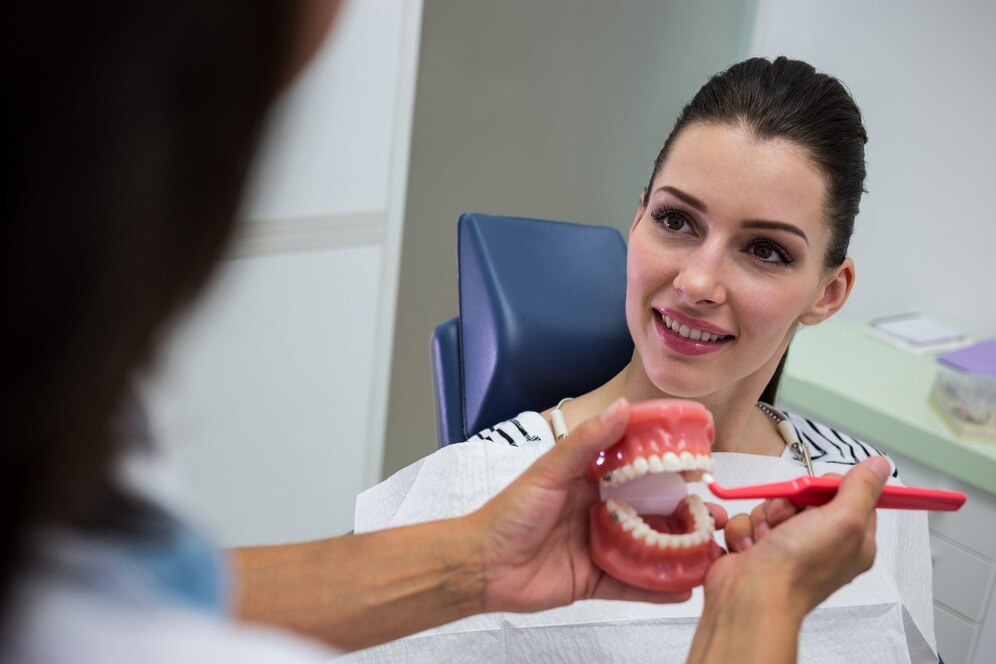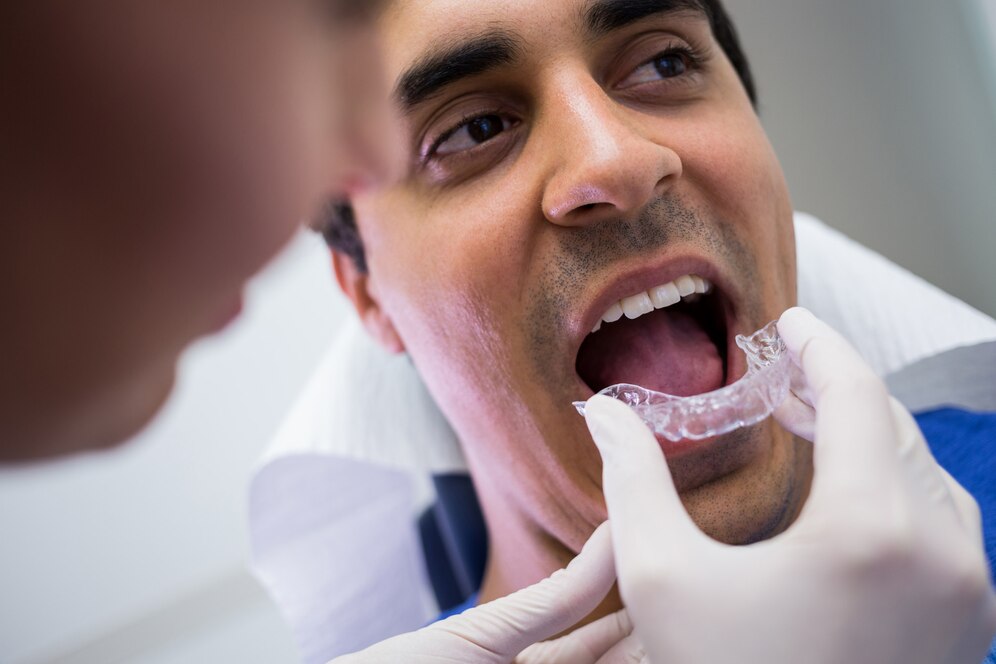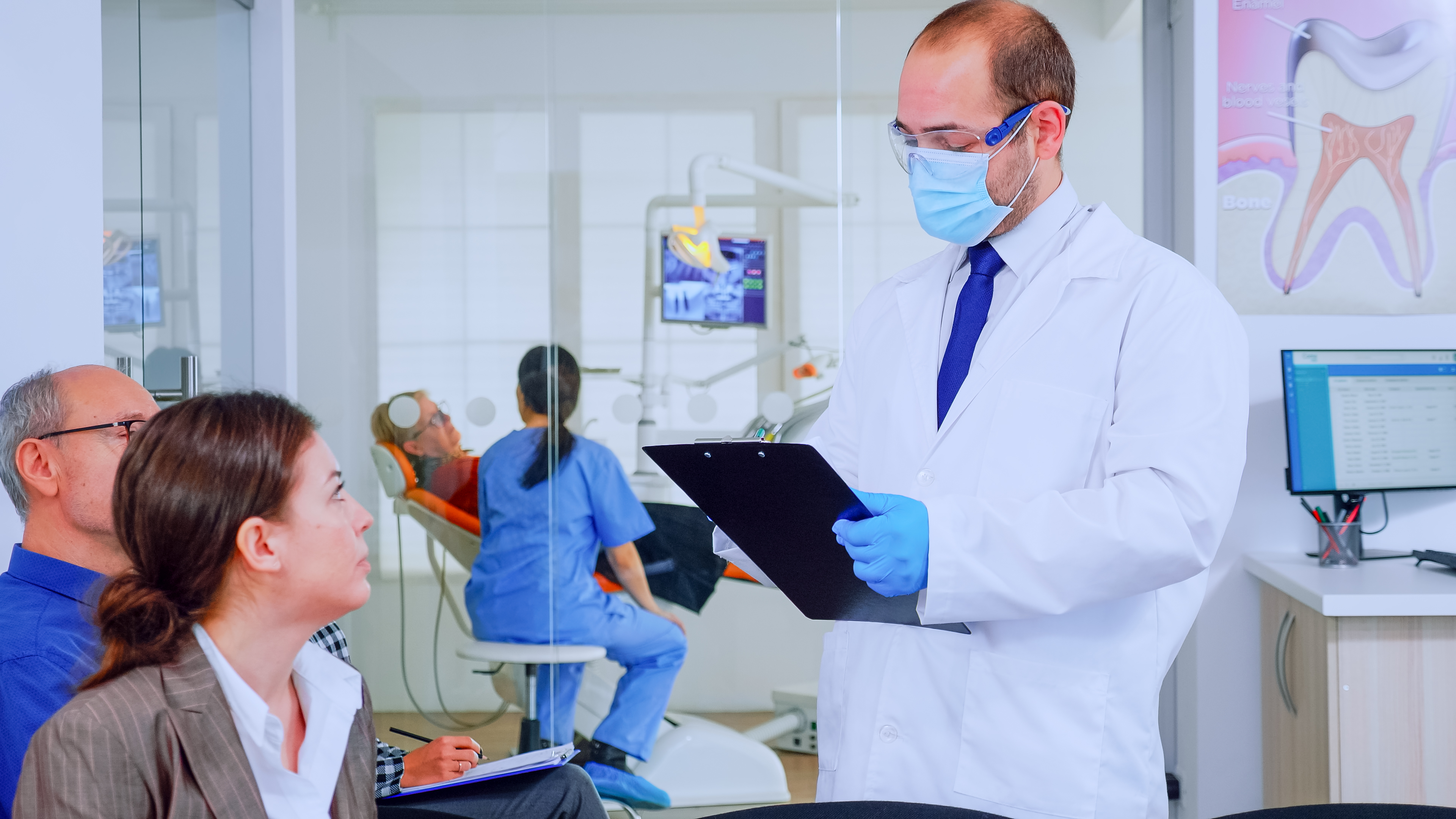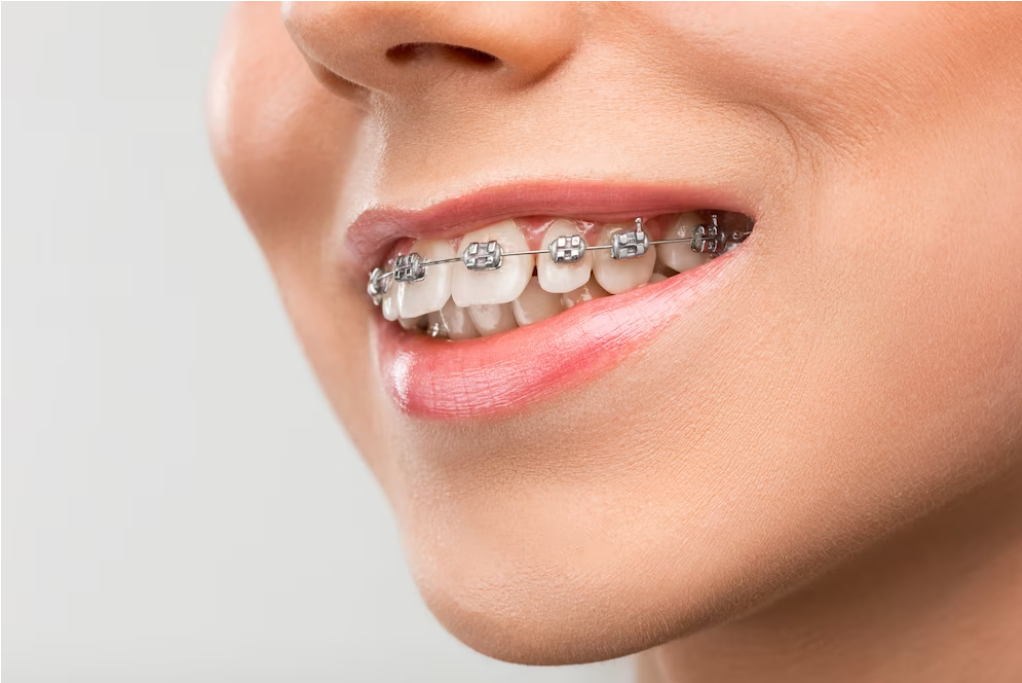Orthodontic treatment is a specialized branch of dentistry that focuses on the correction of misaligned teeth and jaws. There are various treatment options available to address different orthodontic issues. This guide provides an overview of the most common orthodontic treatment options.
1. Traditional Metal Braces:
Description: Metal braces consist of stainless steel brackets attached to each tooth and connected by metal wires. Rubber bands (ligatures) may be used to secure the wires to the brackets.
• Pros: Effective for complex cases, relatively lower cost.
• Cons: Visible, may cause discomfort, require regular adjustments.
2. Ceramic Braces:
Description: Similar to metal braces but with brackets made of clear or tooth-colored ceramic material, making them less noticeable.
• Pros: Less conspicuous than metal braces.
• Cons: More expensive than metal braces, may stain over time.
3. Lingual Braces:
Description: Brackets and wires are placed on the back (lingual) surface of the teeth, making them virtually invisible from the front.
• Pros: Aesthetic appeal, effective for most orthodontic issues.
• Cons: Difficult to clean, may cause speech difficulties initially, more expensive than traditional braces.
4. Invisalign (Clear Aligners):
Description: Custom-made, clear plastic aligners that gradually shift teeth into the desired position.
• Pros: Nearly invisible, removable for eating and oral hygiene, comfortable.
• Cons: Limited effectiveness for severe cases, may be more expensive, requires discipline in wearing aligners consistently.
5. Retainers:
Description: Custom-made devices, either fixed or removable, used to maintain the position of teeth after orthodontic treatment.
• Pros: Stabilizes teeth, prevents relapse.
• Cons: Must be worn as directed, can be lost or broken.
6. Palatal Expanders:
Description: Devices used to widen the upper jaw to address crowding or bite issues.
• Pros: Corrects crossbites and crowding.
• Cons: Temporary discomfort, may affect speech initially.
7. Orthognathic Surgery:
Description: Surgical correction of severe jaw misalignments or skeletal discrepancies.
• Pros: Resolves complex issues, enhances facial aesthetics.
• Cons: Invasive, requires collaboration between orthodontist and oral surgeon, longer treatment duration.
8. Functional Appliances:
Description: Removable or fixed devices used to correct jaw growth discrepancies and improve facial balance.
• Pros: Addresses skeletal issues in growing patients.
• Cons: Limited effectiveness in non-growing individuals.
9. Accelerated Orthodontics:
Description: Techniques that expedite tooth movement, reducing overall treatment time.
• Pros: Shorter treatment duration.
• Cons: Limited research on long-term stability, may cause more discomfort.
10. Digital Impressions and 3D Imaging:
Description: Advanced technology for creating precise molds of the teeth and visualizing treatment outcomes.
• Pros: More comfortable than traditional impressions, enhances treatment planning.
• Cons: Initial setup cost.
Before undergoing any orthodontic treatment, it's crucial to consult with an orthodontic specialist who can assess your specific needs and recommend the most suitable option for your case. Regular follow-up appointments and proper oral hygiene practices are essential for successful orthodontic treatment.









Comment:
Mertie Hillman
22 July, 2020 09:16 AMLorem Ipsum is simply dummy text of the printing and typesetting industry. Lorem standard dummy text ever since the 1500s, when an unknown printer took a galley of typ make a type specimen book. It has survived
Albertine Fortin
22 July, 2020 09:16 AMLorem Ipsum is simply dummy text of the printing and typesetting industry. Lorem standard dummy text ever since the 1500s, when an unknown printer took a galley of typ make a type specimen book. It has survived